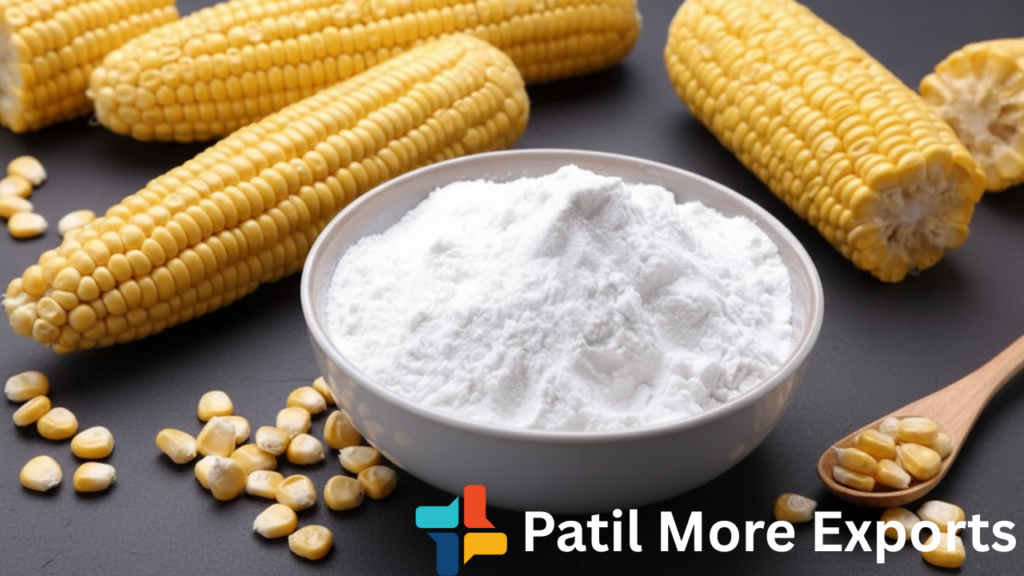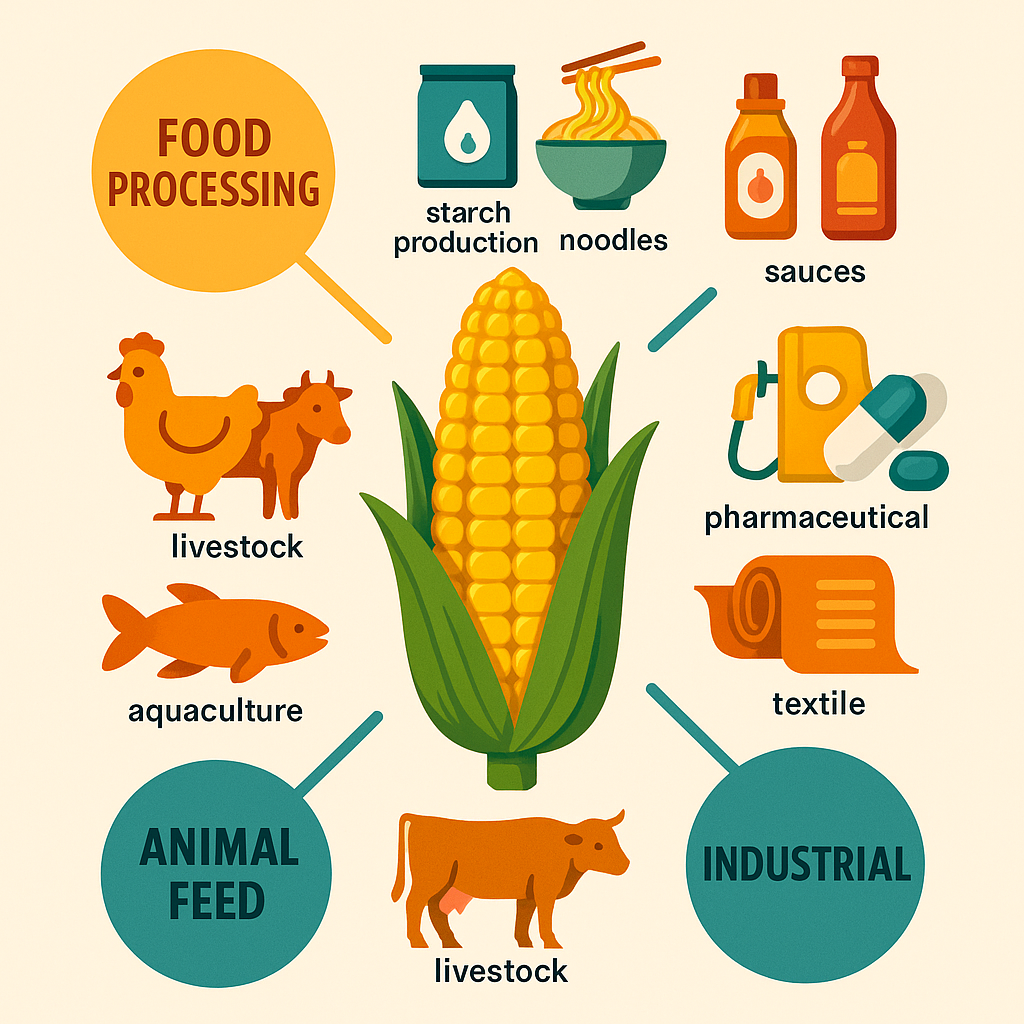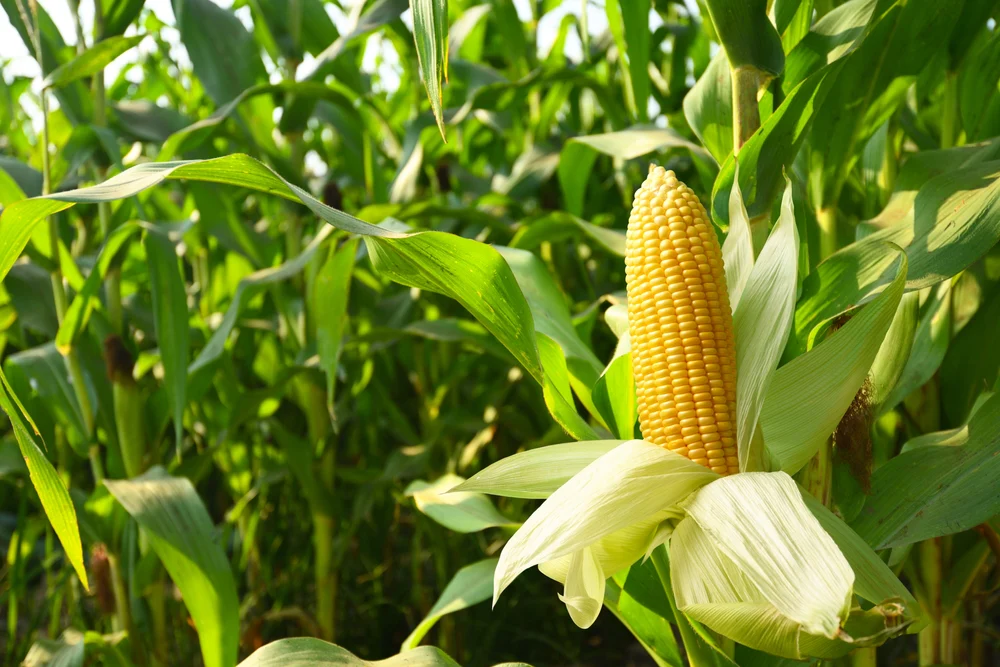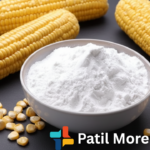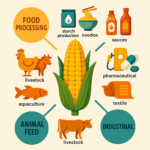Maize Starch The “White Gold” of Industrial application
First, maize starch, often called the “white gold” of industrial manufacturing, plays a crucial role far beyond the kitchen. Specifically, this versatile ingredient serves as a high-value commodity essential to many non-food industries, including paper, textiles, adhesives, and even biodegradable packaging. As a result, Industries worldwide are evolving toward sustainable materials. Therefore, maize starch is emerging as a cornerstone of eco-friendly manufacturing.. What Makes Maize Starch “White Gold”? Derived from the endosperm of corn kernels, maize starch is a fine, white powder known for its exceptional purity and functional properties. Manufacturers rely on it for excellent thickening, binding, and stabilizing benefits that ensure quality and consistency. Moreover, its natural origin and biodegradability make it a sought-after alternative to synthetic chemicals that harm the environment. Industrial Applications of Maize Starch Maize starch supports critical processes across multiple manufacturing sectors. Paper Industry Many paper manufacturers use maize starch to improve paper strength and durability. It acts as a sizing agent, enhancing resistance against oil and water. Additionally, maize starch boosts the smoothness and printability of paper products. Besides this, maize starch adhesives play a vital role in corrugated carton production by offering strong bonding and faster processing times. Textile Industry In textiles, maize starch serves as a sizing agent by providing stiffness and strength to yarns. This protective coating reduces breakage during weaving and improves fabric quality by enhancing smoothness and printability. Importantly, maize starch is a non-toxic, biodegradable alternative preferred in the shift toward sustainable textile manufacturing. Adhesives and Packaging Manufacturers use maize starch as a base for eco-friendly adhesives. These starch-based adhesives deliver excellent tackiness and quick setting, making them ideal for paperboards, labels, and packaging materials. As demand for biodegradable packaging grows, maize starch-based products become indispensable. Emerging Sustainable Solutions Maize starch acts as a vital raw material in producing biodegradable films and bioplastics. These innovations play a crucial role as global regulations push to reduce single-use plastics. By choosing maize starch, manufacturers actively contribute to greener, more circular economies. Why Global Buyers Prefer Indian Maize Starch India ranks among the top producers and exporters of maize starch worldwide. Indian maize starch is renowned for its: Tips for Importers: Selecting Your Maize Starch Supplier Importers looking to secure quality maize starch should: Conclusion: Maize Starch — A Vital Asset for Industrial Growth Maize starch is more than just a commodity; it forms the backbone of many industrial processes. Its natural, biodegradable, and versatile qualities make it a key player in the global push toward sustainable manufacturing solutions. For companies across paper, textile, adhesive, and packaging industries, sourcing premium maize starch from reliable suppliers ensures product excellence and environmental responsibility. Partner with trusted Indian exporters like Patil More Export to tap into this “white gold” resource and drive your industrial manufacturing forward. To learn more about sourcing the finest maize starch, visit Patil More Export’s Maize Starch product page.
Maize Starch The “White Gold” of Industrial application Read More »

